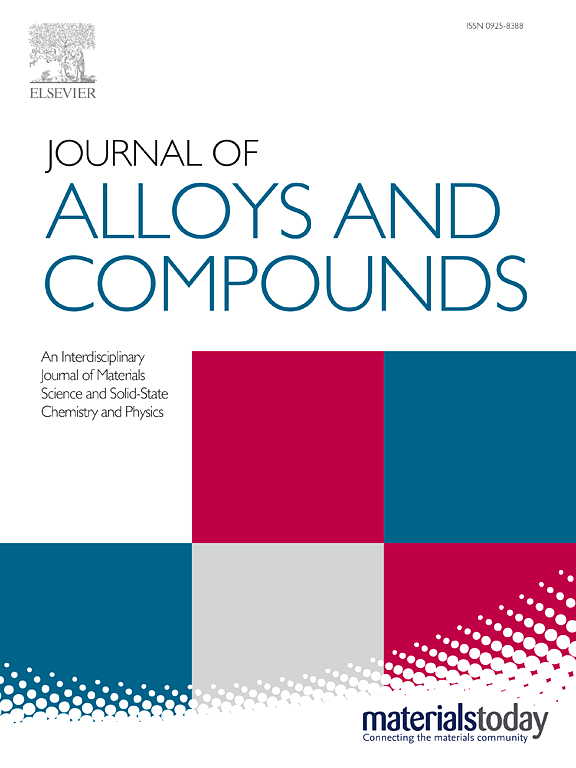New organic–inorganic bromides[(C3H7)4N]2MBr4 (M=Hg and Cd): Synthesis, crystal structure and vibrational characterization
IF 5.8
2区 材料科学
Q2 CHEMISTRY, PHYSICAL
引用次数: 0
Abstract
Two new quaternary ammonium mercury bromide and cadmium bromide crystals [(C3H7)4N]2HgBr4 and [(C3H7)4N]2CdBr4 have been synthesized by slow evaporation met hod at room temperature. Their crystal structure was determined at room temperature by single crystal X-ray diffraction. Both structures consist of three symmetrically inequivalent tetrapropylammonium cations and one discrete tetrahedral [MBr4]2- (M=Hg and Cd) anions. The compounds are isomorphous and crystalize in monoclinic system with C 2/c space group. The purity of each preparation was confirmed by X-ray powder diffraction measurements at room temperature. Internal vibration modes of both crystals have been studied at room temperature using Raman spectroscopy. The structural phase transitions in [(C3H7)4N]2HgBr4 and [(C3H7)4N]2CdBr4 are studied by differential scanning calorimetry (DSC) and two reversible structural phase transitions are detected at 341/330 K and 402/375 K for [(C3H7)4N]2HgBr4 and at 345/333 K and 404/377 K for [(C3H7)4N]2CdBr4 on heating/cooling process. Electrical measurements showed that both compounds were good semiconductors. The thermal evolution of their conductivity shows two regime changes at the temperatures at which structural transitions occur. The thermal evolution of the dielectric constant shows that the second phase transition for the [(C3H7)4N]2CdBr4 compound is ferroelectric in nature.新型有机无机溴化物[(C3H7)4N]2MBr4 (M=Hg和Cd)的合成、晶体结构和振动表征
采用常温慢蒸发法合成了两种新型季铵型溴化汞和溴化镉晶体[(C3H7)4N]2HgBr4和[(C3H7)4N]2CdBr4。在室温下用单晶x射线衍射测定了它们的晶体结构。这两种结构都由三个对称不相等的四丙基铵阳离子和一个离散的四面体[MBr4]2- (M=Hg和Cd)阴离子组成。化合物均为同晶,结晶为单斜晶系,具有c2 / C空间群。在室温下,通过x射线粉末衍射测量证实了每种制剂的纯度。用拉曼光谱研究了两种晶体在室温下的内部振动模式。用差示扫描量热法(DSC)研究了[(C3H7)4N]2HgBr4和[(C3H7)4N]2CdBr4在341/330 K和402/375 K以及[(C3H7)4N]2CdBr4在345/333 K和404/377 K时的可逆结构相变。电学测量表明,这两种化合物都是很好的半导体。在发生结构转变的温度下,其电导率的热演化表现出两种状态的变化。介电常数的热演化表明[(C3H7)4N]2CdBr4化合物的第二相变本质上是铁电性的。
本文章由计算机程序翻译,如有差异,请以英文原文为准。
求助全文
约1分钟内获得全文
求助全文
来源期刊

Journal of Alloys and Compounds
工程技术-材料科学:综合
CiteScore
11.10
自引率
14.50%
发文量
5146
审稿时长
67 days
期刊介绍:
The Journal of Alloys and Compounds is intended to serve as an international medium for the publication of work on solid materials comprising compounds as well as alloys. Its great strength lies in the diversity of discipline which it encompasses, drawing together results from materials science, solid-state chemistry and physics.
 求助内容:
求助内容: 应助结果提醒方式:
应助结果提醒方式:


